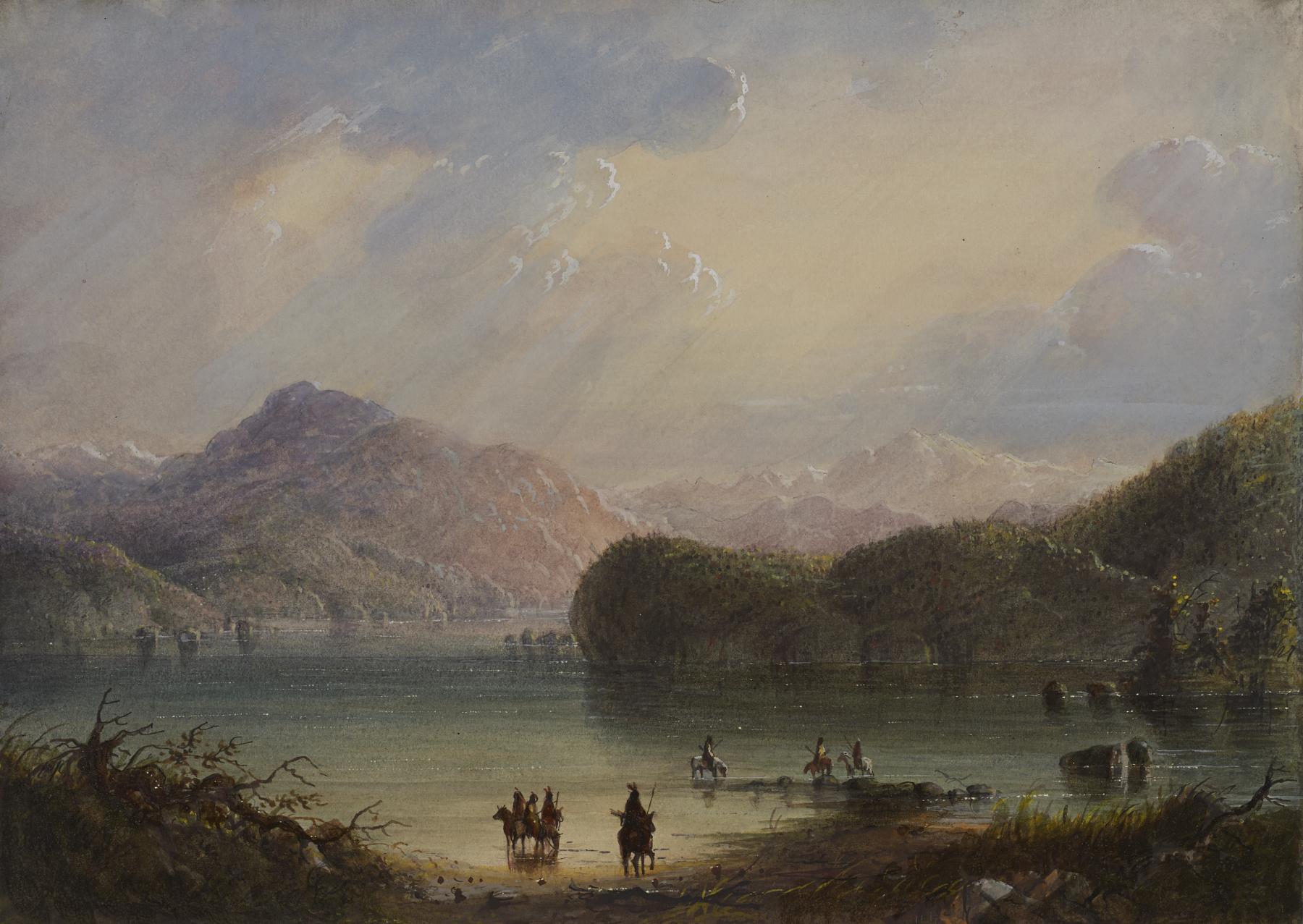Lake Scene
(18th and 19th Centuries )
Extracts from Alfred Jacob Miller’s original text, which accompanied his images of Native Americans, are included below for reference. These words, which shaped how Miller’s contemporaries viewed the watercolors, reveal the racism and sexism embedded in 19th-century exploration and colonization of the western part of what is today the United States.
"From the right a promontory or bluff projects out boldly into the midst of the Lake throwing a broad reflection into the water,- beyond this the mountains begin to rise until they reach their ultimatum in cold barren peaks of solid rock covered with snow. Although it was the month of August, we had frequent snow and hail storms, and towards evening thick overcoats were almost indispensable to comfort. In the morning one or two of the hunters would be dispatched for mountain sheep, or any other game of a size to warrant a shot, for powder and ball are precious articles here and not to be wasted: others would scramble out on the rocks to catch the finny-tribe, not solely for amusement,- no indeed!- keen appetites and insatiable maws were in expectancy, and always ready to do justice to either fish or flesh, with a blazing fire burning briskly, 'in case (as Wilkins Micawber, has it) anything should turn up.' After the meal we could then sit patiently and listen to some Trappers relating reminiscences of his adventures,- his huntings, and fighting with the Indians, and his loves with Indian beauties forming the principal ground work of his narrative." A.J. Miller, extracted from "The West of Alfred Jacob Miller" (1837).
In July 1858 William T. Walters commissioned 200 watercolors at twelve dollars apiece from Baltimore born artist Alfred Jacob Miller. These paintings were each accompanied by a descriptive text, and were delivered in installments over the next twenty-one months and ultimately were bound in three albums. Transcriptions of field-sketches drawn during the 1837 expedition that Miller had undertaken to the annual fur-trader's rendezvous in the Green River Valley (in what is now western Wyoming), these watercolors are a unique record of the closing years of the western fur trade.
Provenance
Provenance (from the French provenir, 'to come from/forth') is the chronology of the ownership, custody, or location of a historical object. Learn more about provenance at the Walters.
William T. Walters, Baltimore, 1858-1860, by commission; Henry Walters, Baltimore, 1894, by inheritance; Walters Art Museum, 1931, by bequest.
Geographies
USA (Place of Origin)
Measurements
H: 8 3/16 x W: 11 1/2 in. (20.8 x 29.2 cm)
Credit Line
Commissioned by William T.Walters, 1858-1860
Location in Museum
Not on view
Accession Number
In libraries, galleries, museums, and archives, an accession number is a unique identifier assigned to each object in the collection.
In libraries, galleries, museums, and archives, an accession number is a unique identifier assigned to each object in the collection.
37.1940.154







